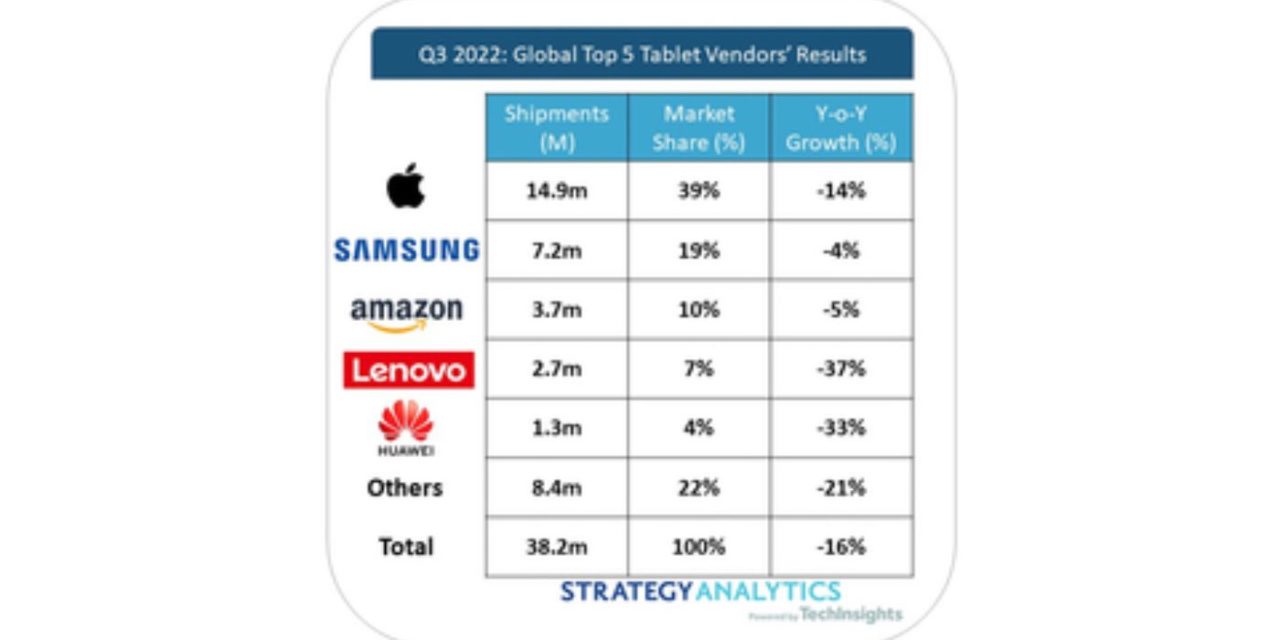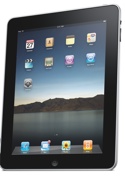Average consumers are pulling back on purchases to contend with higher cost of living while hybrid work and digital learning remain strong forces for mobile computing demand.
Strategy Analytics says a more competitive tablet market is emerging from this dynamic, as wealthy consumers brush off inflation more easily in the premium segment and an expanded, revitalized group of tablet vendors coming out of the pandemic fight for market share. The research group adds that, while the overall market fell -16% in Q3 2022, Samsung and Amazon led top vendors with low single-digit declines credited to their unique strategies in the market. The news was less good for Apple’s iPad.
“This was a tough comparison quarter for Apple because many new products were launched in September 2021,” says Industry Analyst Chiraq Upadhyay. “Unlike the Mac results, there was minimal carry-over demand from last quarter’s supply disruption in iPad. Apple’s diverse portfolio stretching all the way to iPad Pros and iPad Airs running on M1 processors has boosted Apple’s ASP to $483 as users seek to do more on their tablets, including work, school, and play.”
Other highlights from the Strategy Analytics report:
- Samsung shipments were better than expected at 7.2 million units, falling only -4% year-on-year
- Amazon also performed relatively well due to Prime Day promotions and a refreshed 7-inch portfolio, with shipments falling only -5%
- Apple shipments fell -14% but still gained market share as its higher tier portfolio benefits from wealthier customers shrugging off inflation
- Despite -33% year-on-year shipment decline, Huawei maintained its top 5 position in the tablet market
- Lenovo shipments fell -37% as it faced fierce competition in EMEA and North America and demand in the Windows segment is slowing post-pandemic.
Article provided with permission from AppleWorld.Today




